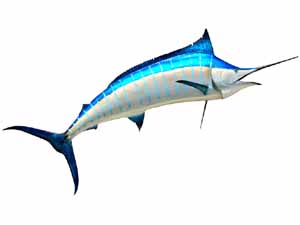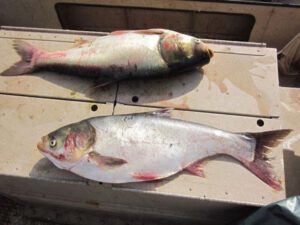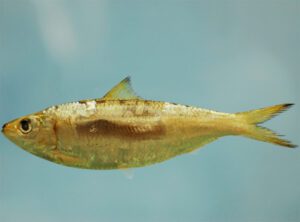The Amur catfish is a species of catfish of Siluridae family. It is also called Silurus asotus or Japanese common catfish. It is a large freshwater fish and found in continental East Asia and in Japan.
Currently it is widely available in East Asia. It is distributed from the Amur River Basin to Red River Basin in northern Vietnam including Korean Peninsula, Japan and Taiwan. Read some more information about this fish species below.
Amur Catfish Characteristics
The Amur catfish are large sized fish, typical of a large silurid catfish. The larvae has three pairs of barbels: two mandibular and one maxillary.
But the mature fish generally have only two pairs of barbels. The maxillary barbels are longer than the head. The stomach of these fish is white and it has irregular white dots on it’s flanks.
Average body length of these fish is around 30-60 cm. But they can reach up to 130 cm in total body length.
And maximum live body weight of the Amur catfish is around 30 kg. Photo and info from Wikipedia.

Feeding
The mature Amur catfish are feed on all types of fish. They generally hide in swamps, cave during the day time and feed during the night.
Breeding
The Amur catfish generally spawn in temporary water (for example, rice fields). They spawn from early evening to midnight.
Their spawning activity generally take place in connection with rainfall, from late April to late August. Spawning of the catfish was correlated with hydrographic parameters dependent on rainfall: daily precipitation, turbidity, water depth, and water temperature.
The spawning habits of the catfish, and in particular the use of temporary waters such as rice fields that become submerged after rainfall or by irrigation, are presumed to be adaptations to the Asian monsoon climate with a pronounced rainy season. The females can lay up to 70,000 eggs.
Uses
The Amur catfish is mainly used for food. It is commercially cultivated in Japan.
Special Notes
THe Amur catfish is economically very important in it’s native range. It is commercially cultivated in Japan. These fish are long-lived, with a maximum of 12 years of lifespan.
Both males and females generally reach maturity within their 4 to 5 years of age, when they reach around 35-37 cm average body length. They generally prefer to live in slow-flowing rivers, lakes and irrigation canals.
Today they are mainly found in China, Japan, Korea, Mongolia, Taiwan and Vietnam. However, review full breed profile of the Amur catfish in the following table.
| Name | Amur Catfish |
| Kingdom | Animalia |
| Phylum | Chordata |
| Class | Actinopterygii |
| Order | Siluriformes |
| Family | Siluridae |
| Genus | Silurus |
| Species | S. asotus |
| Binomial Name | Silurus asotus |
| Other Names | Also called Silurus asotus or Japanese common catfish |
| Breed Purpose | Mainly food, also used for sport fishing |
| Weight | Can reach up to 30 kg |
| Special Notes | Mainly a freshwater fish species, cannot tolerate salinity, economically very important fish, commercially cultivated in Japan, long-lived with up to 12 years of average lifespan, both males and females generally reach maturity within their 4-5 years of age, prefer to live in slow-flowing rivers, lakes and irrigation canals, today used mainly for food |
| Breeding Method | Natural |
| Climate Tolerance | Native climates |
| Body Color | Generally dark, with white stomach and irregular white dots in the flanks |
| Rarity | Common |
| Availability | China, Japan, Korea, Mongolia, Taiwan and Vietnam |






